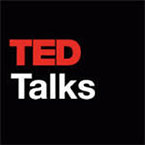Crucell’s Chief Scientific Officer Jaap Goudsmit explains why Haitians should have been vaccinated against cholera following the 2010 earthquake, and why they weren’t.
In 1884, Robert Koch discovered the cause of cholera: the curved Vibrio bacteria, then called ‘comma-bacilli’. But his discovery was received with skepticism, one of the reasons being that nobody had as yet defined what disease causation really means.
Koch formulated a set of principles for establishing a causal relationship between an infectious agent and an illness: the so-called Koch’s postulates. These described four criteria that allow us to call a virus or a bacterium the cause of a disease:
1. Abundance of the agent in affected individuals and absence in the healthy.
2. Isolation of the agent from the affected individual and growth in pure culture in the test tube.
3. The purified infectious agent causes the disease when introduced to a healthy individual.
4. The infectious agent can be re-isolated from the newly and experimentally infected and diseased individual.
These criteria were later modified, even by Koch himself, because the natural history of infectious agents is not black and white. It was found that healthy individuals can incubate a disease, transmissibility turned out a better criterion than isolation, and re-isolation may not be possible despite transmissibility time after time.
However, it is indisputable that ingesting lots and lots of cholera bacteria contaminating a water supply results in infection, and infection results in a dreadful watery diarrhea. Cholera is a horrible disease and a terrible way to die. William McNeill described this vividly in his classic book Plagues and People, published in 1976:
“The effect [of cholera] was to make mortality uniquely visible: patterns of bodily decay were exacerbated and accelerated, as in a time-lapse motion picture, to remind all who saw it of death’s ugly horror and utter inevitability.”
Cholera returns to Haiti
Haiti was hit by cholera in October 2010, nine months after the disastrous earthquake with a strength of 7 on the Richter scale. No cholera had been seen in Haiti for more than a century. On October 19, 2010, the Haitian Ministry of Health and Population was notified that unusually high numbers of people living in the Artibonite and Centre departments north of the capital Port-au-Prince were suffering from acute watery diarrhea, leading in some cases to death. Only a month later, by the end of November, more than 15,000 people were hospitalized and almost 1000 had died of cholera.
The CDC1 weekly report commented on November 19, 2010 that characterization of the Vibrio bacteria isolated from Haitian victims pointed to a single source of introduction of cholera into Haiti.
On January 6, 2011 a team headed by Matthew Waldor from Harvard published an article in the New England Journal of Medicine entitled ‘The Origin of the Haitian Cholera Outbreak Strain’. Their conclusions are self-explanatory:
“Our data distinguish the Haitian strains from those circulating in Latin America and the US Gulf Coast and thus do not support the hypothesis that the Haitian strain arose from the local aquatic environment. It is therefore unlikely that climatic events led to the Haitian epidemic, as has been suggested in the case of other cholera epidemics. Understanding exactly how this South Asian variant strain of V. cholerae was introduced to Haiti will require further epidemiologic investigation.”
Finding the source
A French epidemiologist rapidly figured out what the source of the epidemic was. Renaud Piarroux was convinced that the bacterium had been introduced by Nepalese soldiers taking part in the United Nations Stabilization Mission in Haiti (MINUSTAH). Piarroux discovered that the first cholera cases occurred in a village in central Haiti called Meille, just downriver from the Nepalese MINUSTAH camp. Based on the number of cholera victims in Meille, he calculated that the Nepalese must have had dozens of patients and must have dumped hundreds of liters of contaminated feces. Piarroux proved there was massive contamination of the Artibonite River.
The suggestion that UN forces had brought cholera to Haiti created political havoc. A panel of experts was installed by the UN and on May 3, 2011, the results were presented in New York to UN Secretary-General Ban Ki-moon.
The panel went so far as to dismiss the theory of a local aquatic origin of the Haitian epidemic, and to acknowledge that the outbreak started in Mirebalais—another city downriver from the MINUSTAH base—and spread along the Artibonite river. The UN panel also established that MINUSTAH had failed regarding a key element of cholera prevention: keeping feces and drinking water apart.
The UN panel was unable to prove cholera cases in the MINUSTAH camp, but Piarroux, who conducted his investigation at the time the epidemic took off, concluded otherwise.
Piarroux concluded from the fact that the Artibonite delta witnessed thousands of cases in the first few days, followed by a sharp decline, that only a single, one-time release of trillions of bacteria in the river could have caused this epidemiology. We will never know for sure whether Nepalese soldiers were, indeed, the first cholera victims in Haiti’s current epidemic, but the poor sanitation in the UN camp strongly suggests that Piarroux was right. All in all, the cholera epidemic resulted from a single introduction on the island of Haiti.
Stopping the spread of cholera
Nature recently published an article on the most recent waves of global spread of cholera, written by Mutreya and Dougan of the Wellcome Trust in the United Kingdom. Their data convincingly show the close relationship of the Haitian strains to the south-Asian ones and the very recent introduction of this strain from Asia into the Caribbean.
As we all know, a very effective cholera vaccine is available. However, many public health officials resisted the concept that vaccinating the people at risk following a cholera outbreak in Haiti would have any impact on the course of the epidemic.
The oral cholera vaccine invented by Jan Holmgren of Gotenburg University and produced by Crucell has been proven to be highly effective in two ways: when taken in the recommended number of doses, the vaccine protects virtually every individual against the disease the cholera bacteria cause; and when the majority of people at risk in a community take the vaccine, the cholera bacteria are stopped in their tracks.
Ira Longini of the University of Washington in Seattle published a paper in the April 26, 2011 edition of PNAS2 describing ‘Vaccination strategies for epidemic cholera in Haiti with implications for the developing world’. Longini states: “We show that targeting one million doses of vaccine to areas with high exposure to Vibrio cholerae, enough for two doses for 5% of the population, would reduce the number of cases by 11%. The same strategy with enough vaccine for 30% of the population with modest hygienic improvement could reduce cases by 55% and save 3,320 lives.”
This effect occurs without the so-called herd immunity effect, which requires much higher levels of coverage, say 75% of the whole population being vaccinated. But clearly, low-level vaccination coverage significantly diminishes the suffering caused by cholera, even though it does not block the spread of the disease.
To prevent the sort of crisis seen in Haiti, Longini recommends “a large mobile stockpile of enough vaccine to cover 30% of a country’s population, to be reactively targeted to populations at high risk of exposure.”
Crucell’s offer to provide cholera vaccine for Haiti met resistance and no vaccine was ever delivered or used. Because of all the hesitation and slow decision-making, our cholera vaccine would most likely have arrived too late anyway. Let’s hope that the WHO is now convinced, based on Longini’s observations, of the public health impact of early reactive vaccination in case of a cholera outbreak and will ask us next time to provide vaccine or, better still, decide to stockpile vaccine now.<< Footnotes: 1. CDC: Centers for Disease Control and Prevention in the USA 2. PNAS: Proceedings of the National Academy of Sciences, USA




